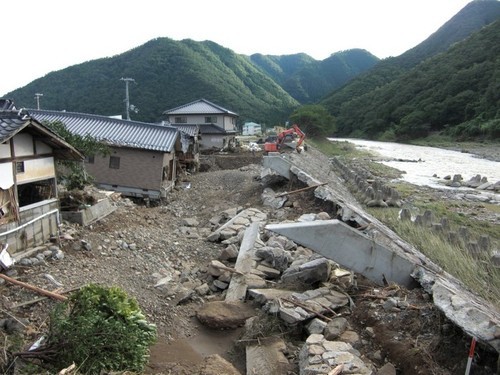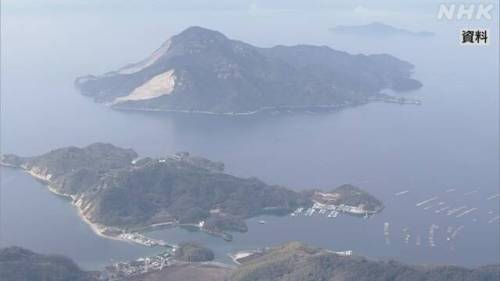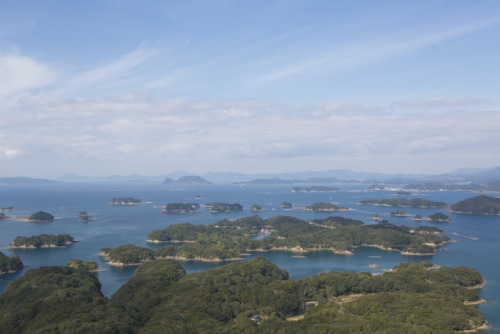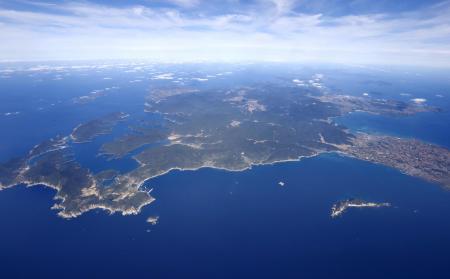日本の考古学者を迎えての新しい合成回です。今回は登呂遺跡についてお話します。どうぞごゆっくりとお過ごしください。それでは、始めましょう。






日本の考古学者を迎えての新しい合成回です。今回は登呂遺跡についてお話します。どうぞごゆっくりとお過ごしください。それでは、始めましょう。 - 中部地方静岡市にある登呂遺跡は、水害の被害を受けながらも、弥生時代に築かれ、1世紀から5世紀の弥生時代後期から古墳時代まで続く遺跡です。 - 遺跡が発見されたのは、昭和に当たる1943年の2ww中頃。 戦闘機のプロペラを作るための弾薬工場が建設されていたのですが、偶然にも地中から粘土や木製のものが見つかり、それ以来1999年代まで発掘調査が行われていました。 もっと話を聞きたいですか? コメントで教えてください。 - お気に召していただけたなら幸いです。良い一週間をお過ごしください。また、日出ずる国から今後の記事でお会いしましょう。 - Sean bienvenidos japonistasarqueológicos a una nueva entrega sintética de arqueología japonesa, en la cual hablaremos de Ruinas de Toro, una vez dicho esto pónganse cómodos que empezamos. - Ruinas de Toro, se localiza en la ciudad de Shizuoka, en la región de Chūbu, se construyó en el periodo Yayoi y continuaron desde finales del período dicho periodo hasta el período Kofun siglos I al siglo V, a pesar de que fueron dañadas por las inundaciones. - Las ruinas fueron descubiertas en plena 2ww en 1943 lo que corresponde a la era showa, Se estaba construyendo, una fábrica de municiones para fabricar hélices para aviones de combate y accidentalmente encontramos objetos de barro y madera en el suelo, desde entonces se excavó hasta los años 1999. ¿Os gustaría que os contará más? déjenmelo saber en los comentarios. - Espero que os haya gustado os deseo una buena semana y nos vemos en próximas publicaciones del país del sol naciente. - Welcome Japanese archaeologists to a new synthetic installment of Japanese archaeology, in which we will talk about the Toro Ruins, so make yourselves comfortable and let's get started. - Toro Ruins, located in the city of Shizuoka, in the Chūbu region, was built in the Yayoi period and continued from the late Yayoi period to the Kofun period from the 1st to the 5th century, although it was damaged by floods. - The ruins were discovered in the middle of the 2ww in 1943 which corresponds to the showa era, An ammunition factory was being built to make propellers for fighter planes and we accidentally found clay and wooden objects in the ground, since then it was excavated until the 1999's. Would you like me to tell you more? Let me know in the comments. - I hope you liked it, I wish you a good week and see you in future posts from the land of the rising sun. - More information: https://www.shizuoka-toromuseum.jp/zhcn/
More Posts from Noticiasarquelogicasjaponesas and Others






Ruinas del Castillo Kinojo/鬼ノ城跡/Kinojo Castle Ruins Capítulo 1 introducción/chapter 1 introduction/第1章;序章.

Welcome to this new series which we will cooperate with @garupan_fan.katyusya and with that said let's start. - What is a samurai? He was a warrior of the 8th century, in his origins they used the bow and not the katana, later they will use other weapons and combat techniques. In this post we are going to focus on the following characters: Mitsuhide, Toshimitsu Saito and Hideyoshi Mideyashi. - Mitsuhide is known to finish off Oda Nobunaga, Mitsuhide would eventually be killed by Hideyoshi Mideyashi. Who was Toshimitsu? He was the main vassal of the Akechi family and father of Kasuya. Saito died on June 17, 1582, his origin and year of birth are unknown. Mitsuhide would kill Oda Nobunaga after the Yamazuki battle. - I hope you liked it and see you in future publications on Japanese history, archeology and geography, among other topics. Have a good week. - @garupan_fan.katyusya と協力するこの新しいシリーズへようこそ。 - サムライとは? 彼は 8 世紀の戦士であり、彼の起源では刀ではなく弓を使用していましたが、後に他の武器や戦闘技術を使用するようになります。 この投稿では、光秀、斎藤利光、御堂筋秀吉の登場人物に焦点を当てます。 - 光秀は織田信長を始末したことで知られており、光秀は最終的には御出吉に殺されます。 利光って誰? 明智家の重臣で粕谷の父。 斉藤は1582年6月17日に亡くなったが、彼の出自と生年は不明である。 山崎合戦の後、光秀は織田信長を討ちます。 - 日本の歴史、考古学、地理学などの今後の出版物でお会いしましょう。 よい一週間を
-
Bienvenidos a esta nueva serie en la que cooperaremos con @garupan_fan.katyus y dicho esto comencemos. - ¿Qué es un samurái? Fue un guerrero del siglo VIII, en sus orígenes usaban el arco y no la katana, posteriormente usarán otras armas y técnicas de combate. En este post nos vamos a centrar en los siguientes personajes: Mitsuhide, Toshimitsu Saito y Hideyoshi Mideyashi. - Se sabe que Mitsuhide acabó con Oda Nobunaga, Mitsuhide eventualmente sería asesinado por Hideyoshi Mideyashi. ¿Quién fue Toshimitsu? Fue el principal vasallo de la familia Akechi y padre de Kasuya. Saito murió el 17 de junio de 1582, se desconoce su origen y año de nacimiento. Mitsuhide mataría a Oda Nobunaga después de la batalla de Yamazuki. - Espero que os haya gustado y nos vemos en próximas publicaciones sobre historia, arqueología y geografía japonesas, entre otros temas. Ten una buena semana.



Sean bienvenidos a una nueva entrega de cultura e historia japonesa, en este caso vamos a hablar sobre la torre Goryokaku, localizada en Hakodate en la prefectura de Hokkaido al norte de la isla de Honshu. - La torre Goryokaku, mide 60 m de altura, fue construida en diciembre de 1964, correspondiente a la era showa para conmemorar el centenario de la construcción del Goryokaku. La antigua torre fue disfrutada por ciudadanos y turistas durante 41 años, fue demolida en junio de 2006 tras la finalización de la nueva torre, dejando su misión a la nueva torre, para que nuevas generaciones la puedan disfrutar. - En este lugar, que sirvió de influencia para el anime Golden kamui ya que muestra la fortaleza en construcción durante el siglo XIX. Ojo, no hay que tomarse como verdadero, todo este tipo de lugares en lo que respecta a películas y series ya que siempre tienen errores pero para hacerse una idea de cómo era el lugar en aquella época, esta bien pero siempre cogerlo con pinzas. - Espero que os haya gustado y nos vemos en próximas publicaciones, que pasen una buena semana. - 今回は、本州の北、北海道の函館にある五稜郭タワーについてです。 - 高さ60mの五稜郭タワーは、昭和に相当する1964年12月、五稜郭築造100周年を記念して建てられた。旧タワーは41年間、市民や観光客に親しまれてきたが、新タワー完成後の2006年6月、その使命を新タワーに託し、新たな世代が楽しめるよう解体された。 - 19世紀に建設中の要塞の様子が描かれ、アニメ「ゴールデンカムイ」に影響を与えたこの場所で、塔は新しい塔の完成後、2006年6月に取り壊された。注:映画やシリーズに関する限り、この種の場所には必ず間違いがあるので、すべて真実だと思わないでほしいが、当時の場所の様子を知るには問題ない。 - それでは、また次の記事でお会いしましょう。 - Welcome to a new installment of Japanese culture and history, in this case we are going to talk about the Goryokaku tower, located in Hakodate in Hokkaido prefecture in the north of the island of Honshu. - The Goryokaku Tower, 60 m high, was built in December 1964, corresponding to the showa era to commemorate the 100th anniversary of the construction of the Goryokaku. The old tower was enjoyed by citizens and tourists for 41 years, it was demolished in June 2006 after the completion of the new tower, leaving its mission to the new tower, so that new generations can enjoy it. - At this site, which served as an influence for the Golden kamui anime as it shows the fortress under construction during the 19th century, the tower was demolished in June 2006 after the completion of the new tower, leaving the mission to the new tower for new generations to enjoy. Note, do not take as true, all this kind of places as far as movies and series are concerned as they always have mistakes but to get an idea of how the place was at that time, it's ok but always take it with tongs. - I hope you liked it and see you in the next posts, have a nice week. Translated with DeepL.com (free version)


Sean bienvenidos, a una nueva aclaración, arqueológica-histórica, en esta ocasión aclararemos y desmentir errores aplicados a la arqueología .¿Por qué la cerámica más antigua se encuentra en Asia y no en el mediterráneo?. - En cierto modo, muchas de las cosas más antiguas se encuentran en mesopotamia, pero no todo ya que muchas cosas surgieron en china y japón. En este caso, hablaremos de la cerámica, los vestigios más antiguos los podemos encontrar en el archipiélago nipón de hace 16.500 años de antigüedad durante el periodo Jōmon(Neolítico japonés lo que equivaldría al neolítico Europeo), eso era lo que se sabía hasta ahora, pero restos arqueológicos rescatados en una cueva de china, datan de una friolera de 20.000años, se tenía entendido que la cerámica apareció hace 10.000 años aproximadamente, ¿Por que se nos ocultan estos datos?, pues muy sencillo, porque no concuerdan con la recta cronológica estipulada, además de no generar interés para su estudio. - La foto número 1, son los restos de la cerámica china. - La foto número 2 es la cerámica de la cultura Jōmon. - Cualquier aportación siempre es bienvenida, ya que esta publicación sirve como aclarar ideas y para debatir. os deseo un buen día y un fuerte abrazo. - 新しい考古学と歴史の解明へようこそ。今回は、考古学に適用された誤りを明らかにし、否定します。なぜ最も古いセラミックが地中海ではなくアジアで見つかったのでしょうか。 - ある意味で、最も古いものの多くはメソポタミアで発見されていますが、中国と日本で発生したものほど多くはありません。今回は陶磁器についてお話しますが、16、500年前の縄文時代(ヨーロッパの新石器時代に相当する日本の新石器時代)の日本列島で最も古い遺跡がありますが、これは今まで知られていましたが、中国の洞窟で救出された考古学的遺跡は、なんと2万年前のもので、約1万年前に陶磁器が登場したと理解されていましたが、なぜこれらのデータが私たちから隠されているのでしょうか。直線と一致しないため、非常に単純です。その研究への関心を生み出さないことに加えて、年代順に規定された。 - 写真1は中国の陶器の残骸です。 写真2は縄文文化の陶器です。 この投稿は説明と議論として役立つので、どんな入力でもいつでも歓迎します。良い一日と大きな抱擁をお祈りします。 - Welcome to a new archaeological-historical clarification, this time we will clarify and deny errors applied to archeology. Why is the oldest ceramic found in Asia and not in the Mediterranean ?. - In a way, many of the oldest things are found in Mesopotamia, but not all as many things arose in China and Japan. In this case, we will talk about ceramics, the oldest remains can be found in the Japanese archipelago 16,500 years ago during the Jomon period (Japanese Neolithic, which would be equivalent to the European Neolithic), that was what was known until now, but archaeological remains rescued in a cave in China, dating from a whopping 20,000 years, it was understood that the ceramics appeared approximately 10,000 years ago, why are these data hidden from us ?, Well very simple, because they do not agree with the straight line stipulated chronological, in addition to not generating interest for its study. - Photo number 1 is the remains of Chinese pottery. Photo number 2 is the pottery of the Jomon culture. Any input is always welcome, as this post serves as clarification and discussion. I wish you a good day and a big hug.



Sean bienvenidos japonistasarqueológicos a una nueva entrega de arqueología nipona, en la cual hablaremos de que alguien está invadiendo la Investigación, por sospecha de violación de la Ley de Protección de Bienes Culturales de la ciudad de Gyoda, prefectura de Saitama, dicho esto pónganse cómodos que empezamos. - El asalto se manifestó alrededor de las 11:00 a. m, del día 27 en Futagoyama el Kofun que se localiza en la ciudad de Gyoda. Se descubrió que alguien había perforado un agujero circular y un agujero rectangular de unos 120 cm de largo, 60 cm de ancho y 190 cm de profundidad. - La verdad esto es un sacrilegio hacer esto a un monumento, está totalmente prohibido escalar los monumentos, para eso podría irse a la montaña, ahora toca invertir enormes gastos por el daño invertido. - ¿Qué opinan ustedes? Espero que os guste y nos vemos en próximas publicaciones de Japón que pasen una buena semana. - 日本の考古学者を歓迎します。今回は、埼玉県行田市の文化財保護法違反の疑いで、「調査」に不法侵入した人についてお話しします。それでは、お楽しみのところ、始めましょう。 - 27日午前11時頃、行田市にある二子山古墳に踏み込みました。縦120cm、横60cm、深さ190cmほどの円形の穴と長方形の穴が何者かによって開けられたことが判明した。 - モニュメントにこんなことをするのは冒涜だ。モニュメントに登るのは完全に禁止されており、そのためには山に行けばいい。 - いかがでしょうか?私はあなたがそれを好きで、日本からの将来の記事であなたを参照してください、良い週を持っている願っています。 - Welcome Japanese archaeologists to a new installment of Japanese archaeology, in which we will talk about someone is invading the Investigation, due to suspected violation of the Cultural Property Protection Law of the city of Gyoda, Saitama prefecture, having said that, make yourself comfortable that we start. - The assault occurred around 11:00 a.m. m, on the 27th in Futagoyama the Kofun which is located in the city of Gyoda. It was discovered that someone had drilled a circular hole and a rectangular hole about 120cm long, 60cm wide and 190cm deep. - The truth is that it is a sacrilege to do this to a monument, it is totally prohibited to climb the monuments, for that you could go to the mountain, now it is time to invest enormous expenses for the damage incurred. - What do you think? I hope you like it and see you in future posts from Japan, have a good week.





Sean bienvenidos, japonistasarqueológicos a una nueva entrega, de arqueología en la que comentaremos, como las Herramientas de hace 2000 años, nos revelan la vida en el período Yayoi, una vez dicho esto pónganse cómodos que empezamos. — Las herramientas posiblemente tuvieran la influencia de china, al igual que otras muchas cosas del país del sol naciente, os pondré imágenes del museo en para que podáis ver el itinerario no sólo de las herramientas sino lo que podéis encontrar en sus adentros, hay que recordar que muchos de esos objetos fueron desenterrados por las personas ya mencionadas anteriormente. — Espero que os guste y nos vemos en próximas publicaciones, que pasen una buena semana. - 日本の考古学者諸君、ようこそ考古学の新連載へ。2000年前の道具が弥生時代の生活をどのように明らかにしたかを議論する。 - 道具はおそらく中国の影響を受けたもので、その他にも日出ずる国の様々なものがあります。博物館の写真をお見せしますから、道具の行程だけでなく、その中から何が見つかるかも見てください。これらの物の多くは、上記の人々によって発掘されたことを覚えておいてください。 - それでは、また次の記事でお会いしましょう。 - Welcome, Japanese archaeologists, to a new installment of archaeology in which we will discuss how tools from 2000 years ago reveal life in the Yayoi period, so make yourselves comfortable and let's get started. - The tools were possibly influenced by China, as well as many other things from the land of the rising sun, I will show you pictures from the museum so you can see the itinerary not only of the tools but also what you can find inside them, remember that many of these objects were unearthed by the people mentioned above. - I hope you like it and see you in future posts, have a nice week.
-
More information: https://www.shizuoka-toromuseum.jp/zhcn/





Sean bienvenidos, japonistasarqueológicos a una nueva entrega, en esta ocasión hablaré sobre actualidad nipona, una vez dicho esto pónganse cómodos que empezamos. — El domingo 16 de julio, azotaron fuertes lluvias al archipiélago nipón y hace no mucho el tifón Lan paralizó el tráfico aéreo de Japón y dejó miles de evacuados al oeste, además sin electricidad. Pero en este caso se han anegado muchas zonas del norte, causando efectos geográficos catastróficos y causando evacuaciones, etc. Por ejemplo: La ciudad de Akita registró precipitaciones, fue un récord, más de 250 milímetros durante un período de 48 horas, todo un hito histórico. — Espero que os guste y nos vemos en próximas publicaciones, que pasen una buena semana. - Welcome, Japanese archaeologists, to a new installment, this time I will be talking about Japanese current affairs, and once that is said, make yourselves comfortable and let's get started. - On Sunday 16th July, heavy rains hit the Japanese archipelago and not long ago Typhoon Lan paralysed Japan's air traffic and left thousands of evacuees in the west without electricity. But in this case many areas in the north have been flooded, causing catastrophic geographical effects and causing evacuations, etc. For example: The city of Akita recorded record rainfall of more than 250 millimetres over a 48-hour period, a historic milestone. - I hope you like it and see you in future posts, have a good week. - 日本の考古学者たちよ、新しい回へようこそ。今回は日本の時事問題についてお話しします。そう言ったら、くつろいで、始めましょう。 - 7月16日の日曜日、日本列島は大雨に見舞われ、少し前には台風12号が日本の空の便を麻痺させ、西日本では何千人もの避難者が停電に見舞われた。しかし今回は、北部の多くの地域が浸水し、地理的に壊滅的な影響を引き起こし、避難などを余儀なくされている。例えば:秋田市では、48時間に250ミリ以上の記録的な雨量を記録し、歴史的な出来事となった。 - お気に召していただけたなら幸いである.




Sean bienvenidos japonistaarqueológicos, a una nueva actualidad del país del sol naciente. En este caso os comentaré que se han actualizado los datos del número de islas del archipiélago Japonés, dicho esto pónganse cómodos que empezamos. - La información viene de la agencia Geoespacial de Japón, el número de islas son de 14125 en todo el país, más del doble del número anunciado hasta ahora, en 1987 el cálculo era de 6852 islas. - El número de islas en cada prefectura Nagasaki 1479 Hokkaido 1473 Kagoshima 1256 Iwate 861 Okinawa 691. - ¿Qué opinan al respecto? Espero que tengan una buena semana y nos vemos en próximas publicaciones de Japón - 日出づる国から新しいニュースへようこそ。今回は、日本列島の島の数が更新されたことをお伝えします。 - 国土地理院からの情報ですが、日本全国の島の数は14125で、今まで発表されていた数(1987年は6852島)の2倍以上になっています。 - 各都道府県の島嶼数 長崎県 1479 北海道 1473 鹿児島県 1256 岩手県 861 沖縄県 691 - いかがでしょうか?今週も良い一週間をお過ごしください。また、今後の日本からの投稿でお会いしましょう。 - Welcome to a new update from the land of the rising sun. In this case I will tell you that we have updated the data on the number of islands in the Japanese archipelago, so make yourselves comfortable and let's get started. - The information comes from the Geospatial agency of Japan, the number of islands is 14125 in the whole country, more than double the number announced until now, in 1987 the estimate was 6852 islands. - The number of islands in each prefecture Nagasaki 1479 Hokkaido 1473 Kagoshima 1256 Iwate 861 Okinawa 691. - What do you think about it? I hope you have a good week and see you in future posts from Japan.
Tanque japonés, abatido por tropas norteamericanas, agosto del 42, guerra del Pacífico./Japanese tank, shot down by North American troops, August 42, Pacific War./米軍によって撃墜された日本の戦車(42年8月、太平洋戦争)。
-
 junian5522 liked this · 1 month ago
junian5522 liked this · 1 month ago -
 josephlikien liked this · 3 months ago
josephlikien liked this · 3 months ago -
 buffetlicious liked this · 6 months ago
buffetlicious liked this · 6 months ago -
 bear-pattern-hamster liked this · 10 months ago
bear-pattern-hamster liked this · 10 months ago -
 repera23 liked this · 10 months ago
repera23 liked this · 10 months ago -
 noticiasarquelogicasjaponesas reblogged this · 10 months ago
noticiasarquelogicasjaponesas reblogged this · 10 months ago -
 grr5478 liked this · 11 months ago
grr5478 liked this · 11 months ago -
 random-delulum liked this · 1 year ago
random-delulum liked this · 1 year ago -
 naser1963 liked this · 1 year ago
naser1963 liked this · 1 year ago -
 rodolfo9999 liked this · 1 year ago
rodolfo9999 liked this · 1 year ago -
 chuprinin liked this · 1 year ago
chuprinin liked this · 1 year ago -
 asongpanda1 liked this · 1 year ago
asongpanda1 liked this · 1 year ago -
 lcc-ldv liked this · 1 year ago
lcc-ldv liked this · 1 year ago -
 jlmahmud liked this · 1 year ago
jlmahmud liked this · 1 year ago -
 1vidapoeticando liked this · 1 year ago
1vidapoeticando liked this · 1 year ago -
 novemberful liked this · 1 year ago
novemberful liked this · 1 year ago -
 babylon-iraq-baghdad liked this · 1 year ago
babylon-iraq-baghdad liked this · 1 year ago -
 misterio-m liked this · 1 year ago
misterio-m liked this · 1 year ago -
 asikan liked this · 1 year ago
asikan liked this · 1 year ago -
 ogzdgrz51 liked this · 1 year ago
ogzdgrz51 liked this · 1 year ago -
 joaopinto liked this · 1 year ago
joaopinto liked this · 1 year ago -
 shimagoro4056 liked this · 1 year ago
shimagoro4056 liked this · 1 year ago -
 illyena liked this · 1 year ago
illyena liked this · 1 year ago -
 narihira8 liked this · 1 year ago
narihira8 liked this · 1 year ago -
 toytraint liked this · 1 year ago
toytraint liked this · 1 year ago -
 dgfmaurizio liked this · 1 year ago
dgfmaurizio liked this · 1 year ago -
 u-nobu liked this · 1 year ago
u-nobu liked this · 1 year ago -
 hiromusicarts-blog liked this · 1 year ago
hiromusicarts-blog liked this · 1 year ago -
 sicks93 liked this · 1 year ago
sicks93 liked this · 1 year ago -
 noticiasarquelogicasjaponesas reblogged this · 1 year ago
noticiasarquelogicasjaponesas reblogged this · 1 year ago

238 posts









